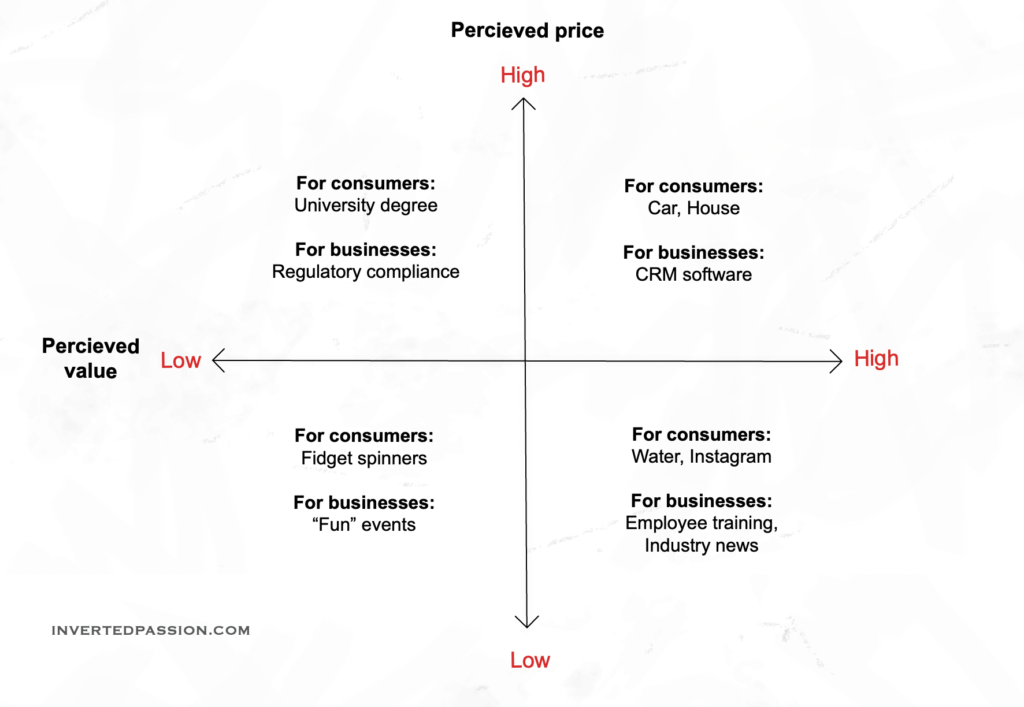It’s hard for people to know how much they should be paying for a particular product. Evolution has trained us to be skeptical of strangers’ claims. By default, people will always feel they’re getting ripped off. So, instead of evaluating rationally, people resort to their gut feeling, which is informed by the perceived alternatives for the offering. Hence, the positioning of a product becomes the main criteria by much price is judged by people.

But it’s also the other way around. Especially for new brands, price serves as an anchor to the customer for deciding which category to slot the product in. For example, the price of a newly launched car slots it either in the luxury or the mid-range or the budget market. It matters less if the car is actually luxury or not, but if the price of the car is similar to Mercedes or BMW, the expectations of the consumer and their willingness to pay will be similar to Mercedes or BMW.
This suggests that no one company has the leverage to charge whatever it wants to. Customer expectations for the right price for a product are guided by what alternatives are available in the market and how much do those things cost. Startups have no option but to play within the market of perceived alternatives and charge similar to what those alternatives are charging. For example, Internet has made consumers habituated to free news, information, and videos. A startup that wants to charge for information has an uphill battle because, in the minds of consumers, the price of information is close to nil (even though the value they get from such information is high). So, value pricing doesn’t work out – water is valuable but people don’t pay a lot for it.
This is also why a lower price is not always better. When products offered are too cheap, they send a signal about quality. Especially in enterprises where they’re used to purchasing software and services worth many thousands of dollars, a product that’s only priced a few dollars is perceived to be meant for small businesses and not enterprises.
So, price your products not based on the value you’re providing but what your target customers are used to paying for offerings closest in their minds to your offering. This also means that through right messaging and positioning an entrepreneur has an opportunity to influence what customers compare the offering to and hence what he is able to charge. For example, if you’re launching an information product, don’t call it a report and have customers compare it to freely available info on the internet. Position it as consulting and customers will be able to pay dearly for it.
Remember: don’t price your product based on the value it creates, price it based on products you want it to be compared with
This essay is part of my book on mental models for startup founders.
Join 200k followers
Follow @paraschopra